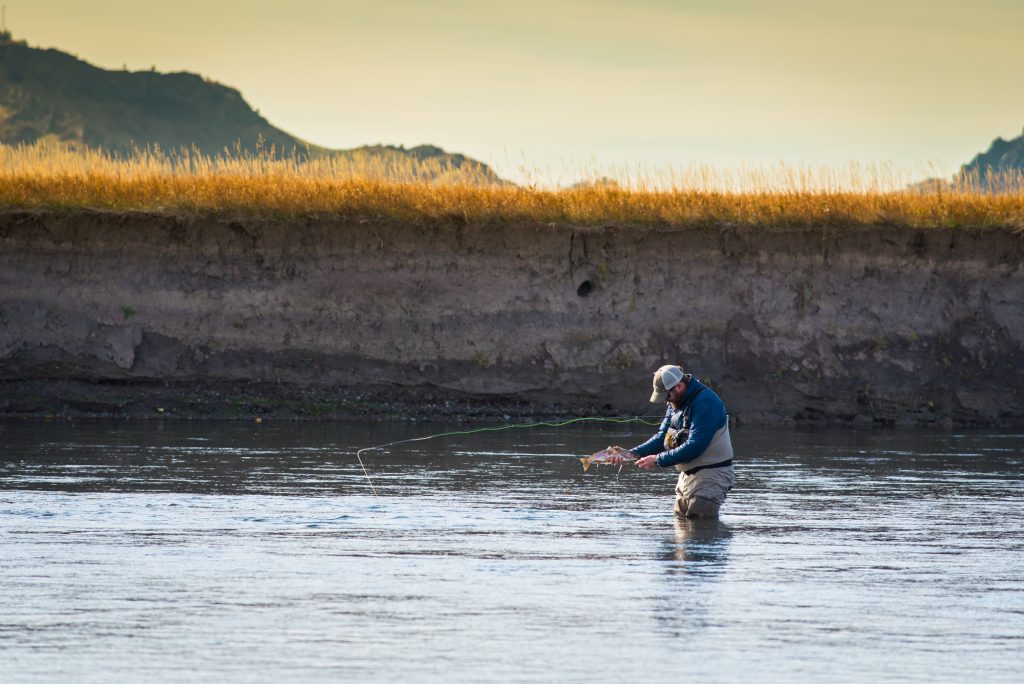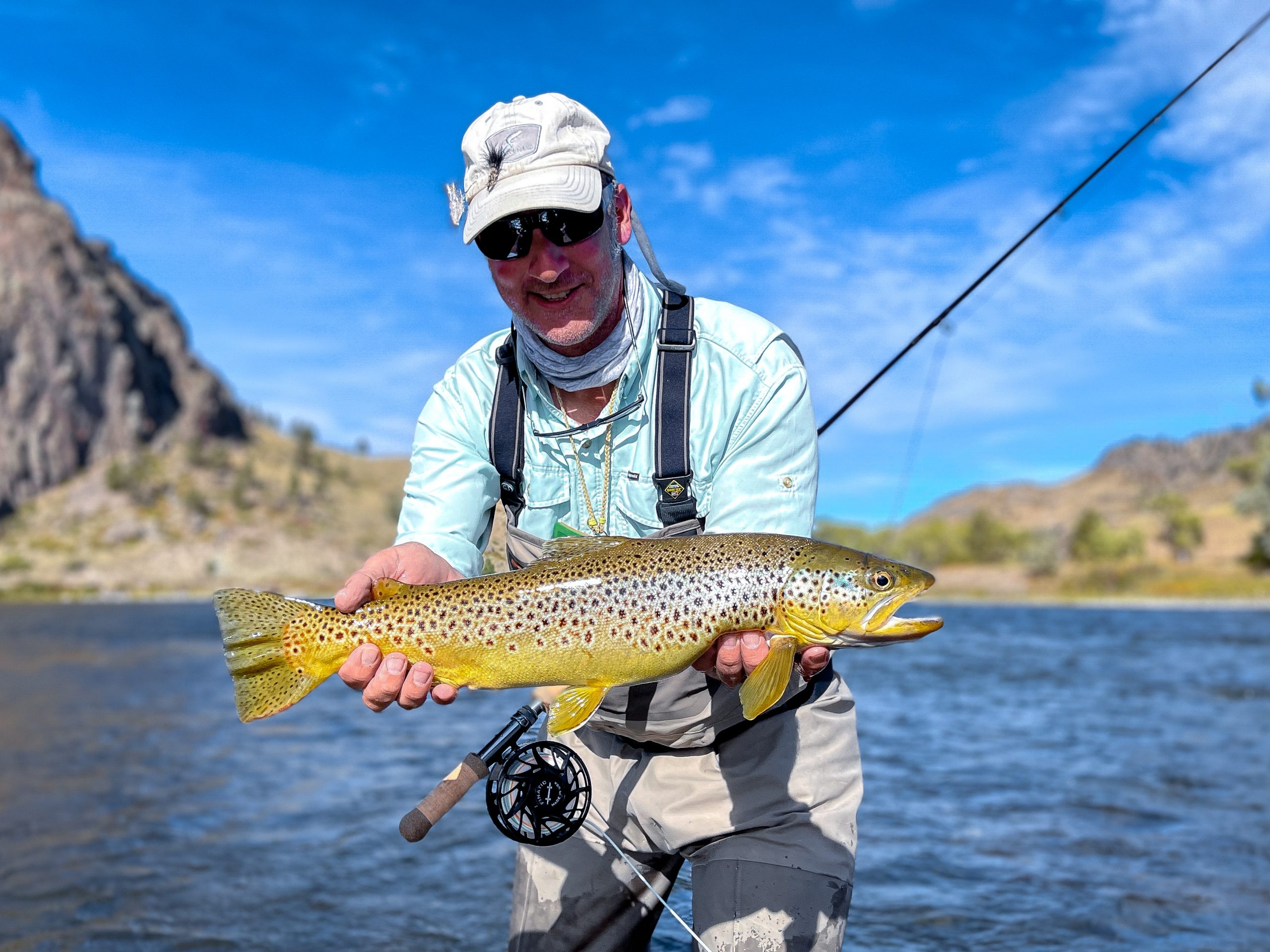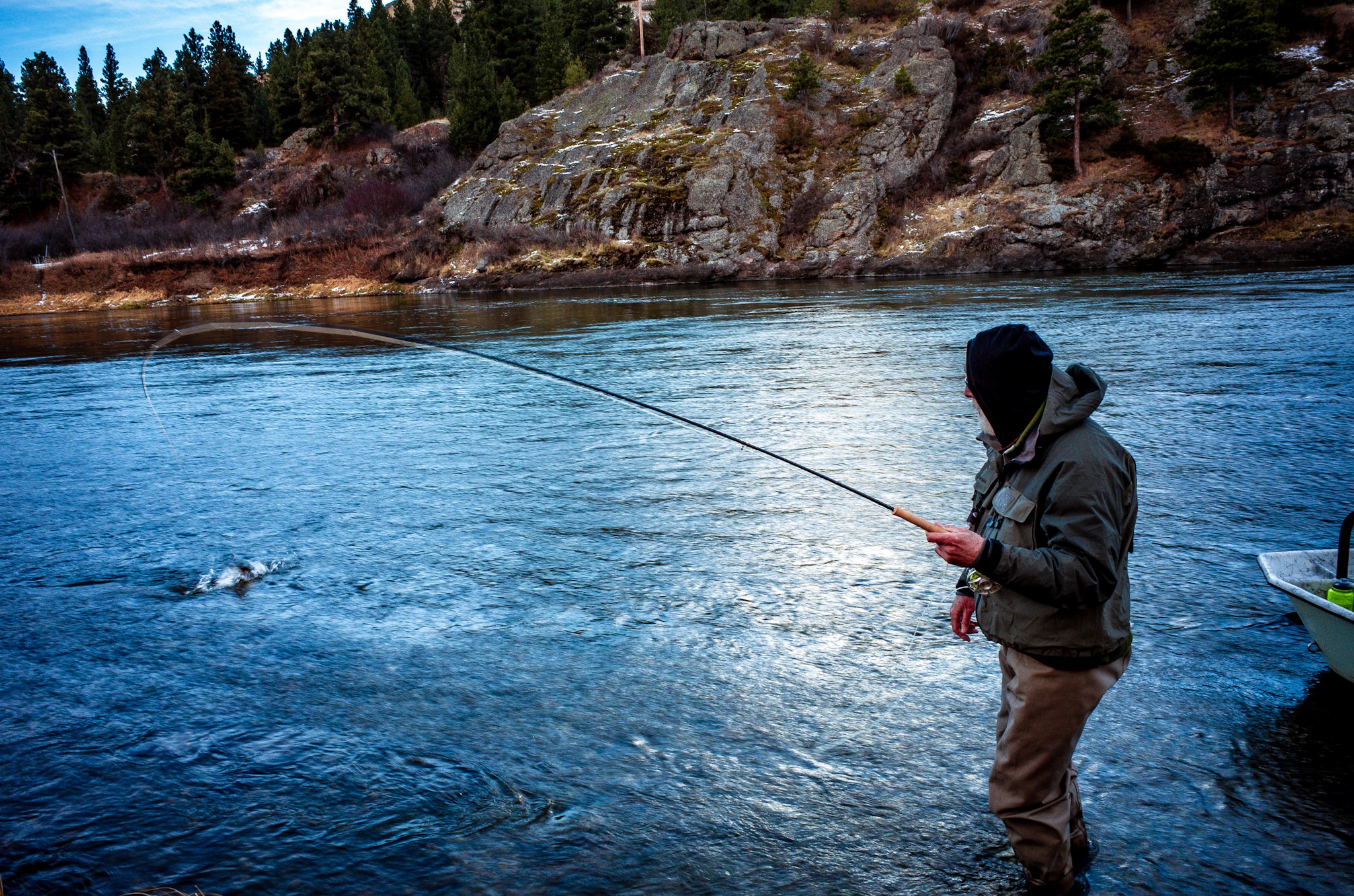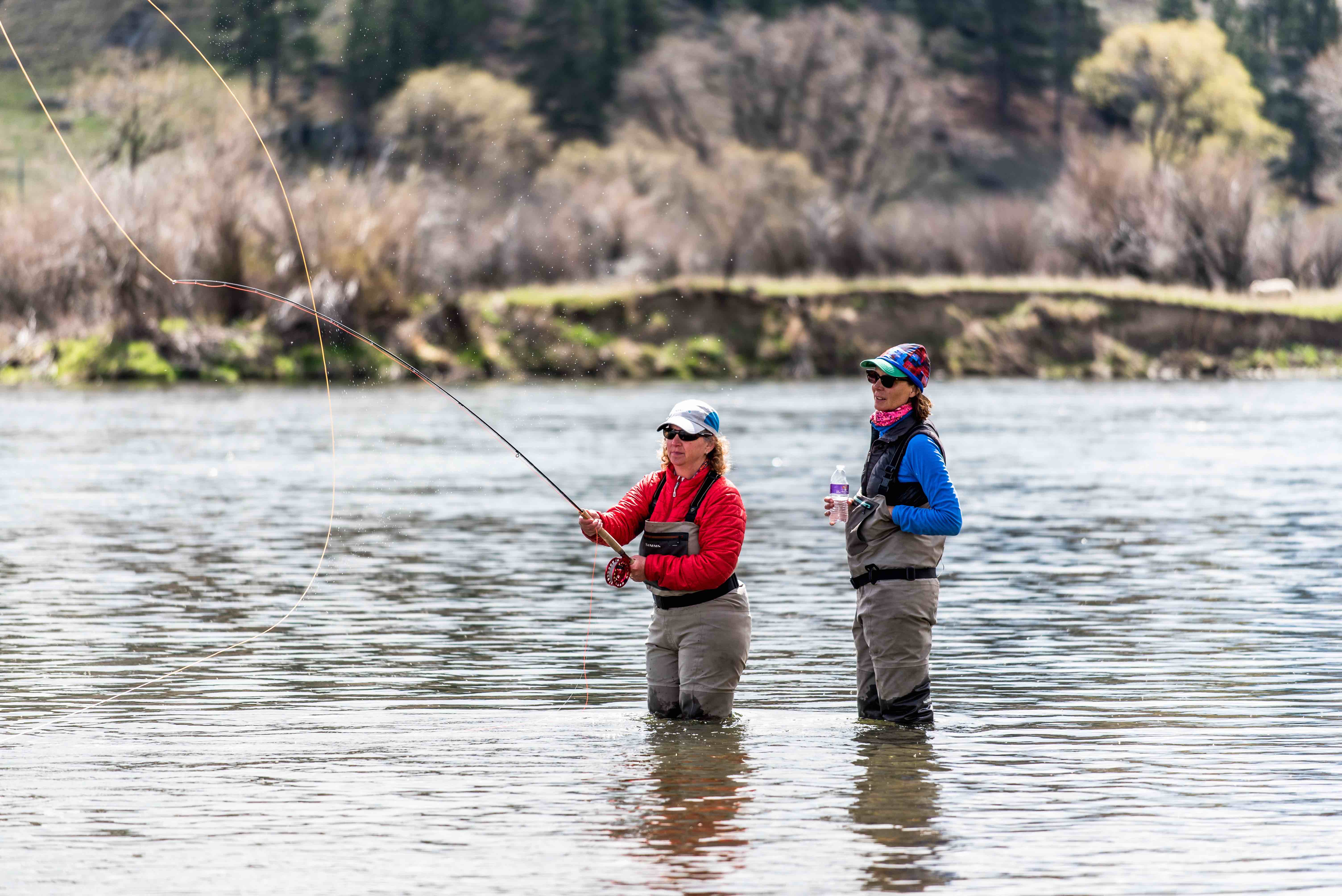Ed Note: A great article from John and Mike McCune. Swing Season is in full effect, with a slight hiccup in the fishing with the below zero temperatures and snow!
We’re often asked about how we present the fly when fishing with our two handers on the Missouri. We find that changing retrieves and speeds can dramatically effect your success rate. If you’ve never thought about differing retrieve styles when swinging flies, check out this short video we put together with Mike McCune.[/vc_column_text]
Mike touches on most of the retrieve styles you might use, and just glances off presentation. While many spey anglers like to mend constantly upstream to keep the swing as slow as possible, we typically do the opposite. Our standard presentation on the Missouri is a broadside presentation. We do this by mending downstream after the cast and keep our rod tip pointed directly downstream while imparting some action to our fly (not necessarily “retrieving”). As the fly swings across the river, we execute large but gentle mends, again to the downstream side of our rod-tip. Our fly line is perpendicular or nearly perpendicular to the current the entire swing, which results in the fly swimming broadside. This gives the fish a better view of the fly, but also is a more natural presentation, especially when fishing leeches or minnow patterns.
Old school Atlantic Salmon and Steelhead fishermen would refer to this description as a “greased-line” approach. The big difference for our situation is that we are likely using a sink tip and swimming the fly deeper. The original greased-line approach centered around a surface presentation. But the arc and speed would be identical.
This method is very effective – for both trout, Steelhead and Salmon – in slower currents. It is an especially useful presentation when you find yourself casting across a faster center current with dead water on either side. A situation we commonly find or selves in on the slow-moving Missouri.
In faster currents, and especially faster and deeper slots – we’d likely defer to an upstream mend, slow swing presentation. But for slower glides and tail outs, we find a broadside presentation far more effective.





1 Comment.
Very informative video. Thanks for sharing this! As a side note, when the swing bit is not on fire and you just don’t want to put the Spey rod down has anyone tried the Switch indicator line on their trout Spey at the shop? I just bought one for my 4wt and I am curious how it will work nymphing those longer, tougher deep water drifts.